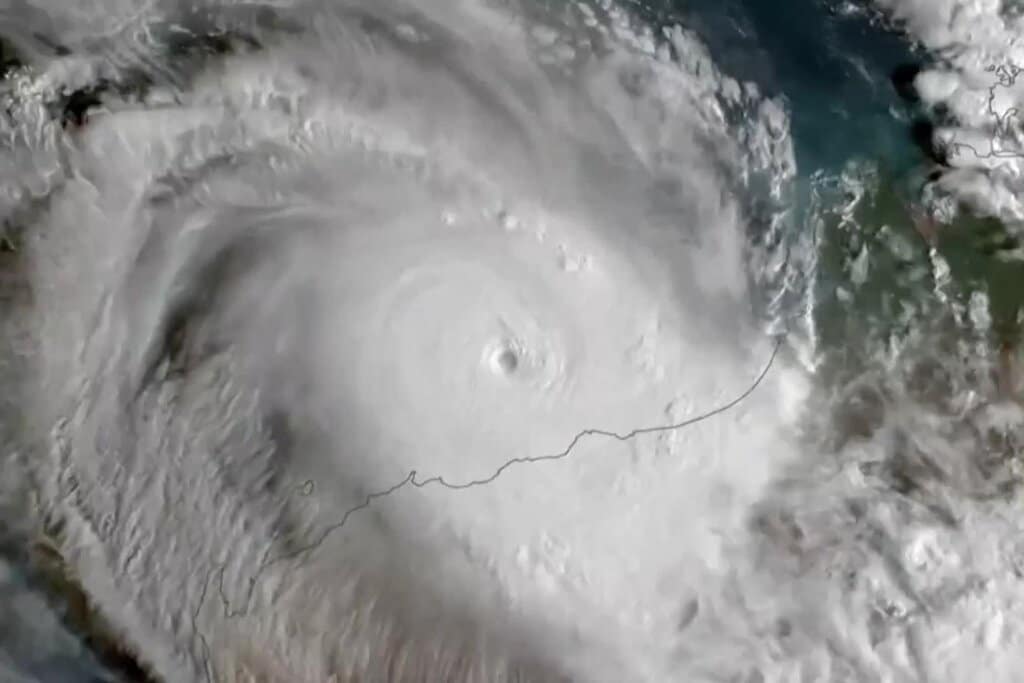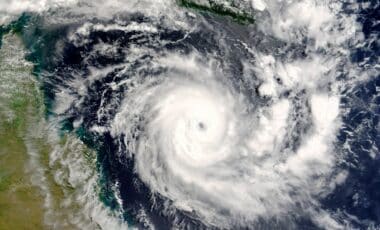Winter Storm Zelia, the first tropical cyclone to make landfall in 2025, brought destructive 130mph winds and torrential rainfall to north-western Australia. The storm, which hit on Valentine’s Day, intensified due to unusually warm ocean temperatures, severely affecting the Pilbara and Marble Bar regions.
Meanwhile, the US faced another severe weather event, with Winter Storm Jett sweeping across the north-east, bringing freezing conditions and snowstorms.
Cyclone Zelia formed in the Indian Ocean, rapidly strengthening into a category 4 storm before striking Australia’s coast. This marked the first major tropical storm of the year, and the extreme weather has since led to widespread flooding. The storm’s intensity has also highlighted the potential consequences of rising ocean temperatures.
On the other side of the world, the northern United States is experiencing a harsh winter with the arrival of Winter Storm Jett. Bringing powerful winds, snow, and freezing rain, the storm has caused disruptions across several states, further exacerbating the cold snap that has been affecting North America and Canada.
Impact of Cyclone Zelia in Australia
Cyclone Zelia’s destructive force was felt most acutely in the Pilbara region of Western Australia. With winds reaching up to 130mph, the cyclone caused flooding, downed trees, and significant damage to infrastructure.
In nearby areas like Marble Bar, floodwaters rose rapidly, disrupting transportation networks. The Great Northern Highway was closed due to debris and flooding, cutting off key food supplies. According to reports, rainfall levels reached 440mm over just two days, compounding the damage.
The storm’s intensity was fuelled by record-warm Indian Ocean temperatures, which were 1-2°C above average. This increase in ocean heat provided the cyclone with the moisture and energy it needed to intensify rapidly.
However, as the cyclone weakened into a tropical low by Saturday, the storm began to dissipate, though it continued to cause rain across southern regions of the country.
Winter Storm Jett Brings Severe Cold to North-East US
Meanwhile, in the United States, Winter Storm Jett has brought blizzards, freezing rain, and high winds to the north-east. South-western Pennsylvania saw up to 5 inches of snow, with southern New York accumulating about 4 inches.
Snow and strong winds are expected to continue, with gusts reaching up to 60mph. The storm, which intensified through a process called bombogenesis, has left many without power and caused travel disruptions across affected areas.
The storm’s progression through the region has been marked by its rapid intensification, dropping 24 hectopascals in 24 hours. This sudden pressure shift is responsible for the extreme cold that is sweeping the north-eastern states.
Cities like Chicago, Detroit, and Indianapolis are seeing temperatures well below average, as the storm heads southwards, impacting wider areas.
Both Cyclone Zelia and Winter Storm Jett are reminders of the power and unpredictability of extreme weather events, exacerbated by climate factors such as warming oceans and changing atmospheric conditions.









